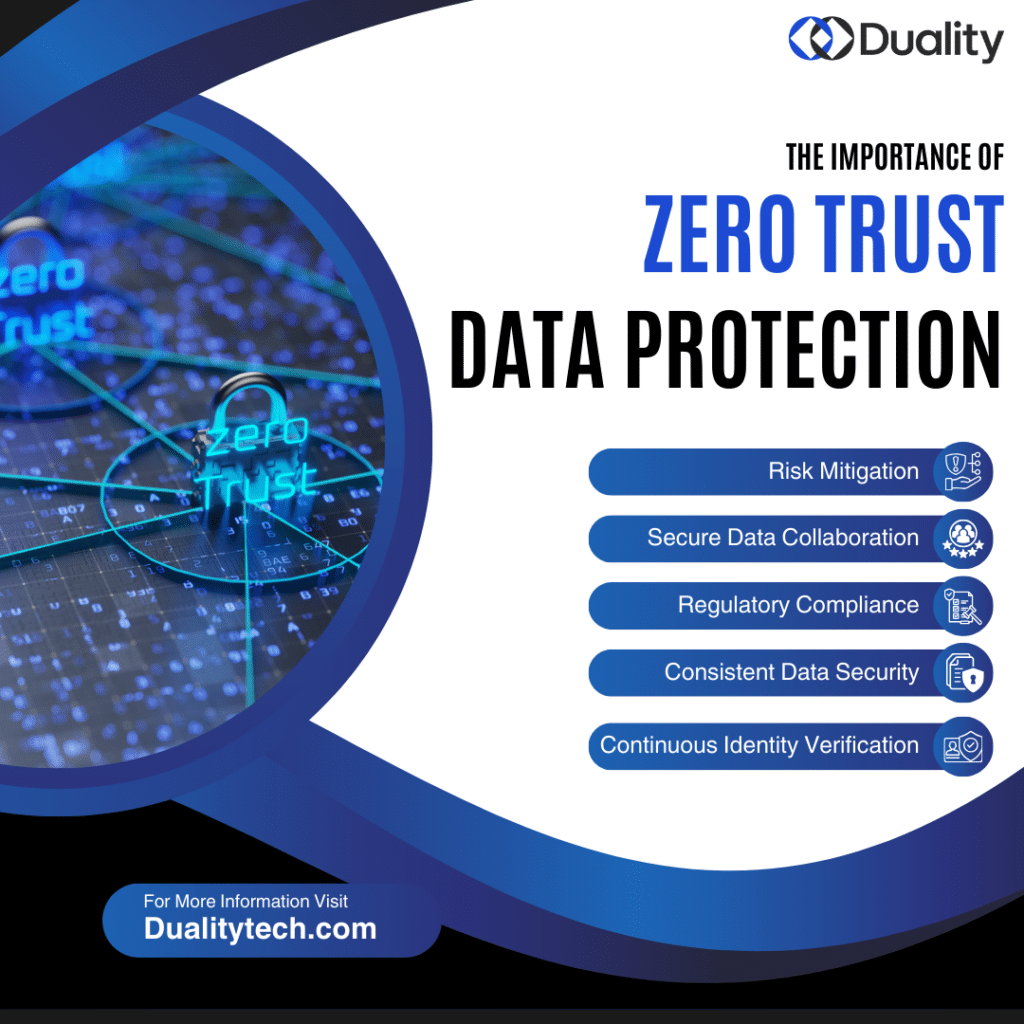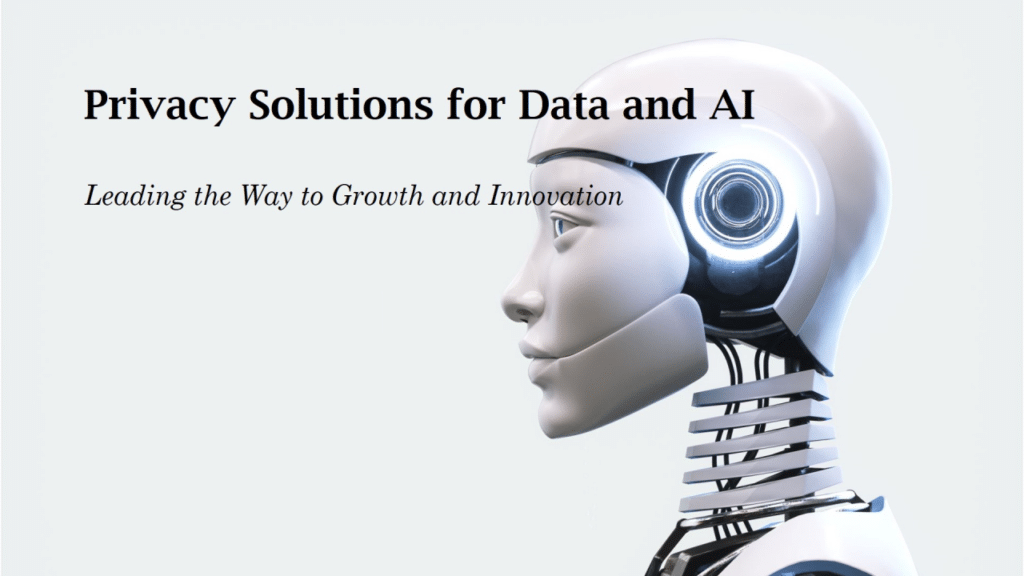What is Zero Trust Data Protection?
“Zero trust” comes from the acknowledgment that any data access, from any user, whether incidental or direct, is a potential way into networks, applications, or data repositories for malicious actors. And so was born the concept of zero trust security, wherein all access must be verified. Cybersecurity is a continuous challenge requiring organizations to have adaptable security measures that evolve to changing threats. Traditional security measures are proving inadequate against a variety of risks, as highlighted by a 68% increase in ransomware attacks in 2023, according to Malwarebytes’. From insider threats to external threats and ransomware attacks, organizations face a continuous challenge in safeguarding their sensitive information.
Zero Trust Data Protection is a security model based on the principle of maintaining strict access controls and not trusting anyone by default, even those already inside the network perimeter. This method challenges traditional security notions by enforcing rigorous identity verification and access controls, ensuring users only have permissions essential for their specific role and task, regardless of the user’s location or the network segment from which they are connecting. Utilizing a zero trust approach ensures that security does not rely on static defenses but instead uses dynamic and context-aware mechanisms to protect sensitive data. By continuously verifying every interaction and strictly enforcing access controls, zero-trust solutions reduce the risks of cyber threats, data breaches, and unauthorized access. Of course, such granular monitoring of user activity and data movement without slowing down productivity is a major challenge.
The Importance of Zero Trust Data Protection
Zero trust data protection is designed to combat a range of threats, including insider breaches where authorized users misuse their access, external attacks seeking to infiltrate networks with compromised user credentials, and the danger of cyber threats and ransomware attacks. Additionally, there are many risks associated with third-party risk management, especially among data analytics and data science service providers, which still largely operate on client trust, often leading to many data breaches due to that trust. By implementing defense-in-depth principles such as rigorous access controls and continuously verifying user identities, zero trust strategies enhance the security posture of organizations, mitigating the risk of unauthorized access and data breaches.
As organizations increasingly rely on cloud services, mobile devices, and collaborative platforms, zero trust offers a solution that seamlessly extends security controls across diverse environments and maintains an organization’s data compliance requirements. So no matter where the data is stored, zero trust implementation provides a consistent and effective approach to safeguarding sensitive information, meeting the rising demand for data security across multiple collaborators and platforms.
Zero Trust Principles
Never Trust, Always Verify
Zero trust requires that no user or entity is trusted by default, regardless of its position within or outside the network perimeter. This principle is critical in environments where data collaboration involves multiple entities and services, as trust is never assumed, and verification is mandatory for every access request.
Least Privilege Access
In a zero trust model, access rights are rigorously enforced, ensuring users have only the permissions essential for their specific role. This minimizes the risk of data exposure and reduces the potential for data leaks or misuse.
Microsegmentation
Microsegmentation involves dividing network resources into secure zones to limit who can access specific data and contains potential breaches within these isolated zones–sometimes referred to as “inner perimeter” security. By limiting access and separating data, you can significantly limit the spread and impact of a security incident.
Multi-factor Authentication (MFA)
Zero trust leverages authentication mechanisms, including multi-factor authentication, to verify the identity of all users and devices attempting to access resources within the network. This helps prevent unauthorized access by ensuring users are who they claim to be. It’s important to note that the most reliable MFA options are those with dedicated applications, as there have been notable breaches of SMS and email-based MFA workflows.
Real-Time Threat Detection and Response
Constant monitoring of all activities within the network allows for real-time detection of suspicious behaviors. This is crucial for detecting potential threats, and proactively mitigating risks before they escalate.
Security Posture Compliance
All users who are collaborating must maintain a high standard of security compliance. This includes regular security audits and adhering to agreed-upon data security policies and standards.
The principles of a zero trust strategy provide a thorough and adaptive approach to securing sensitive information against security threats. Each principle works to create a secure environment where organizations, governments, and institutions can securely collaborate while safeguarding their data and meeting compliance requirements.
How to Implement a Zero Trust Solution
1. Identify What Needs To Be Secured
Create a detailed inventory of all users, devices, and endpoints that will interact with your network. Determine what data needs protection, which devices will access this data, and the platforms involved. It’s critical to consider all stakeholders and potential collaborators, to tailor the security measures accurately,
2. Understand and Implement Network Parameters and Controls
Understand how your data and applications interact and what access controls will be set within your system. An effective strategy includes segmenting your network into micro-perimeters, where access is meticulously controlled. This segmentation helps minimize the risk of unauthorized access and lateral movement within the network.
3. Establish Zero Trust Architecture
A zero trust network must be designed around your specific “protect surface”; which is all the critical data, assets, and resources that need to be secured. Each network has unique requirements and threats, necessitating a custom framework. As you map out the “protect surface”, you can then define the architecture of your zero trust model. The next step involves integrating robust security measures that limit unauthorized access to these crucial areas.
4. Create Zero Trust Policies
Effective zero trust policies are often developed using the Kipling Method—asking detailed questions like who, what, when, where, why, and how for every user, device, and network segment seeking access. This rigorous interrogation helps form clear policies and procedures that effectively manage data access and risk.
5. Continuously Maintain and Monitor Your Network
Ongoing surveillance is vital to detect any potential threats and allows for real-time insights to proactively manage network security. Be sure to document as much activity as possible within your environment to better understand how users interact with your system, so you can continuously implement zero trust best practices. This proactive approach ensures that your network security evolves with emerging threats and adapts to new vulnerabilities.
Duality Tech in Zero Trust Data Protection
Duality Tech is at the forefront of implementing zero trust data protection strategies. By operationalizing multiple privacy-enhancing technologies (PETs) and implementing zero trust into our secure data collaboration platform, we enable organizations to securely collaborate, access, process, and analyze encrypted data without exposing it to security threats. This innovative approach positions Duality Tech as a leader in enforcing and practicing effective zero trust strategies. Essentially, users no longer need access to data in order to query or analyze it, encapsulating the essence of Zero Trust beyond any comparable option.
Contact us to learn more about how we can help you implement and effectively use zero trust to freely collaborate on sensitive information.
















